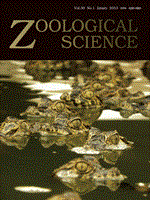The genetic threat due to hybridization with free-ranging dogs is one major concern in wolf conservation. The identification of hybrids and extent of hybridization is important in the conservation and management of wolf populations. Genetic variation was analyzed at 15 unlinked loci in 28 dogs, 28 wolves, four known hybrids, two black wolves, and one dog with abnormal traits in Iran. Pritchard's model, multivariate ordination by principal component analysis and neighbor joining clustering were used for population clustering and individual assignment. Analysis of genetic variation showed that genetic variability is high in both wolf and dog populations in Iran. Values of HE in dog and wolf samples ranged from 0.75–0.92 and 0.77–0.92, respectively. The results of AMOVA showed that the two groups of dog and wolf were significantly different (FST = 0.05 and RST = 0.36; P < 0.001). In each of the three methods, wolf and dog samples were separated into two distinct clusters. Two dark wolves were assigned to the wolf cluster. Also these models detected D32 (dog with abnormal traits) and some other samples, which were assigned to more than one cluster and could be a hybrid. This study is the beginning of a genetic study in wolf populations in Iran, and our results reveal that as in other countries, hybridization between wolves and dogs is sporadic in Iran and can be a threat to wolf populations if human perturbations increase.
How to translate text using browser tools
1 January 2013
Detecting Hybridization between Iranian Wild Wolf (Canis Lupus Pallipes) and Free-Ranging Domestic Dog (Canis Familiaris) by Analysis of Microsatellite Markers
Rasoul Khosravi,
Hamid Reza Rezaei,
Mohammad Kaboli
ACCESS THE FULL ARTICLE

Zoological Science
Vol. 30 • No. 1
January 2013
Vol. 30 • No. 1
January 2013
Canis lupus
genetic distance
neighbor joining
PCA
Pritchard's model
wolf




